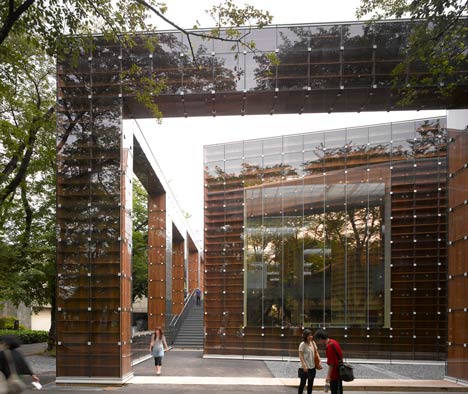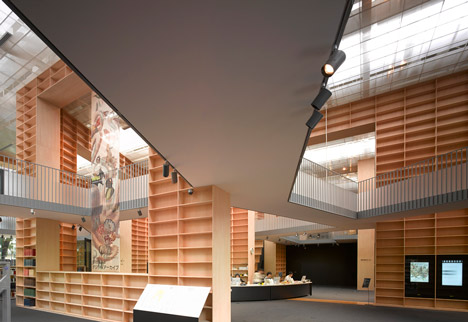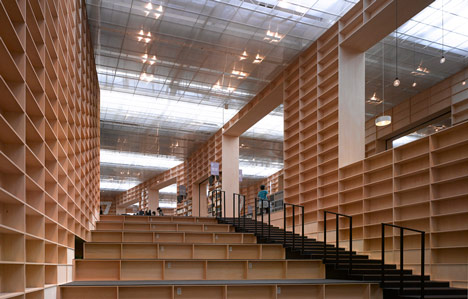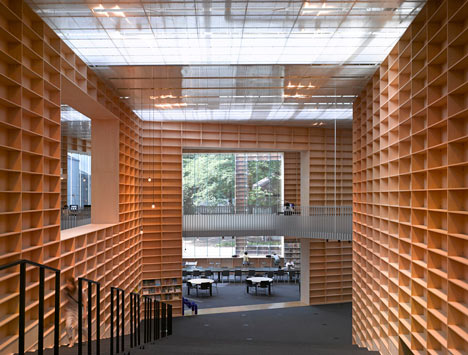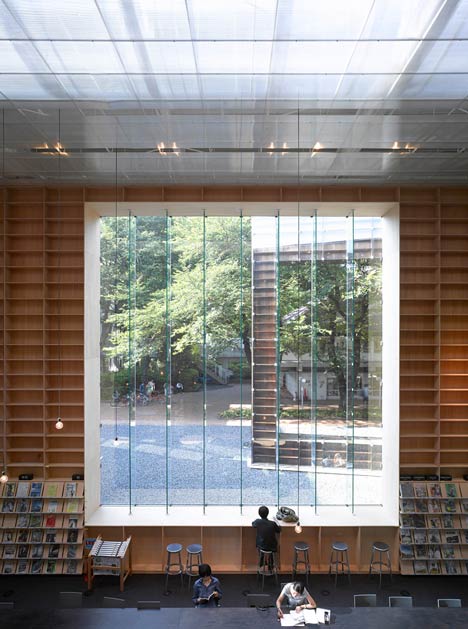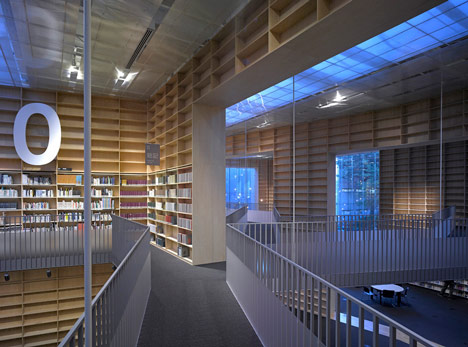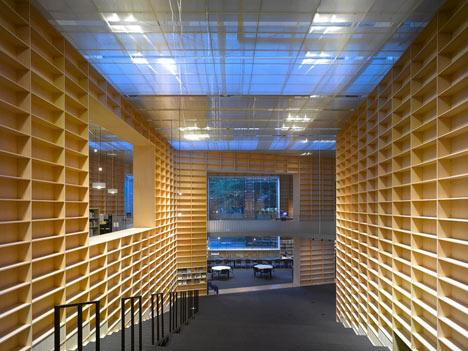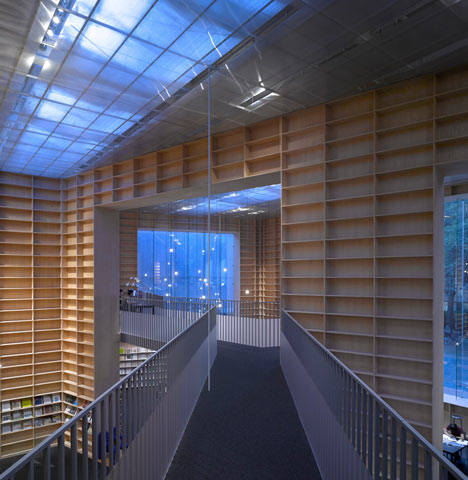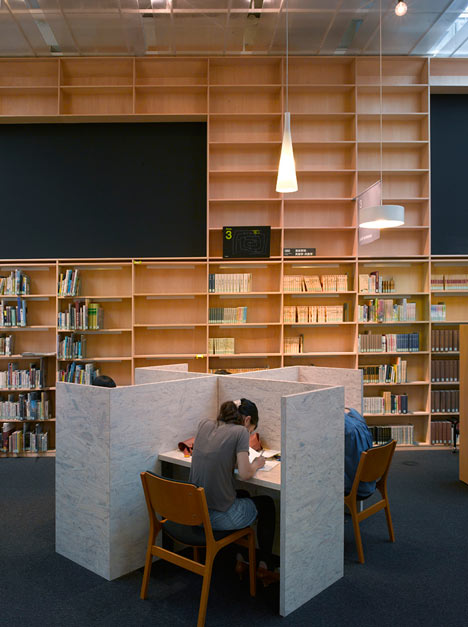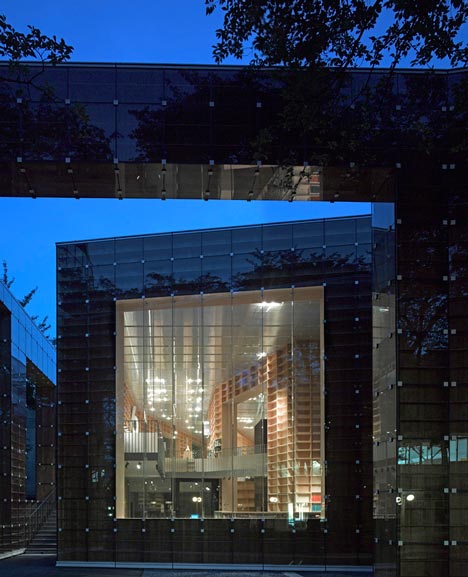The project undertaken by leading Japanese architect Sou Fujimoto, for the prestigious Japanese university, was in response to the requirements of the client to refurbish the existing library of the university and convert it into an art gallery, as well as to design a new library building, the two buildings eventually becoming integrated. The competitive world of education in Japan dictated that the new building should provide a distinctive and marketable identity for the university.
The concept of ‘a forest of books’, is an innovative idea to create a new relationship between the library and the user. Incorporating the basic premise of such a building, books, bookshelves and light, the designers incorporated all of these in a literal manner. The entire structure is erected out of wooden bookcases, walls, stairs and divisions soaring 9 metres high with openings cut out for practical purposes creating spaces for access and reading rooms. There is a working space of 6.500 sq.m. and a capacity for an archive of 200.000 books, including a closed space in the basement.The spiral layout of one continuous bookshelf provides functionality and a simple course of navigation for the students. However, it is unlikely that all of the shelves will ever be full of books as the walls do not all contain the same weight bearing capacity.
Finally, the whole structure is enclosed within a skin of glass, creating an instantly recognisable building which is, in the words of the designer, ‘The library most library like - the simplest library.’
















